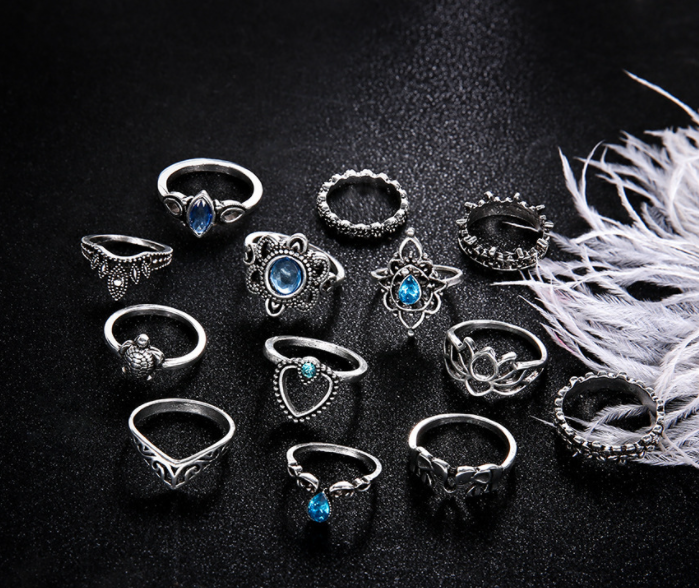
Lab Diamonds 4Cs: Understanding the Key Elements of Lab-Grown Diamond Quality
November 5, 2024Table of Contents
Introduction: What Are Lab-Grown Diamonds?
Before diving into the 4Cs, it’s important to understand what lab-grown diamonds are and how they differ from their mined counterparts.
Lab-grown diamonds, also known as synthetic or cultured diamonds, are real diamonds created in a laboratory environment rather than being mined from the Earth. Despite the differences in origin, lab-grown diamonds have the same chemical composition, physical properties, and optical characteristics as natural lab diamonds 4Cs. They are made using advanced technological processes that replicate the natural conditions under which diamonds form deep within the Earth.
There are two primary methods used to create lab-grown diamonds: High Pressure High Temperature (HPHT) and Chemical Vapor Deposition (CVD). Both of these techniques result in diamonds that are virtually indistinguishable from mined diamonds, making them a desirable and eco-friendly alternative.
The 4Cs of Lab-Grown Diamonds
The 4Cs—carat weight, cut, color, and clarity—are the primary criteria used to evaluate diamonds, whether lab-grown or natural. These factors influence a diamond’s beauty, durability, and value. Here’s a detailed look at each of the 4Cs and how they apply to lab-grown diamonds.
Carat Weight
Carat weight measures the size of the diamond, with one carat equal to 0.2 grams. It’s one of the most well-known factors when it comes to choosing a diamond, but it’s important to remember that carat weight doesn’t necessarily indicate the quality of the diamond. A larger diamond can be less beautiful if it has poor cut, color, or clarity.
For lab-grown diamonds, carat weight is just as important as it is for mined diamonds. The bigger the diamond, the higher the price, but the price per carat often decreases as the diamond size increases. If you’re working within a budget, you may want to prioritize the other Cs over carat weight.
Cut
The cut of a diamond refers to how well the diamond has been shaped and faceted. The quality of the cut affects the diamond’s brilliance and overall sparkle. A well-cut diamond will reflect light beautifully, whereas a poorly cut diamond can appear dull, even if it has perfect color and clarity.
For lab-grown diamonds, the cut is just as important as for natural diamonds. In fact, because lab-grown diamonds are often made in controlled environments, they can have even more precise cuts. The best cuts for maximizing brilliance are the round brilliant and princess cuts, but there are other cuts, such as cushion, oval, and emerald, that may better suit personal tastes.
The 4 main aspects of diamond cut are:
- Proportions: The dimensions of the diamond, including the depth and table size.
- Symmetry: How well the facets align and reflect light.
- Polish: The smoothness of the diamond’s surface.
- Shape: The overall outline of the diamond, such as round, square, or pear-shaped.
Color
When it comes to diamonds, color is graded on a scale from D to Z. D is colorless, and as the grade moves down to Z, the diamond takes on more noticeable yellow or brown hues. The less color a diamond has, the more valuable it is, with colorless diamonds commanding a premium price.
Lab-grown diamonds can be color-graded just like natural diamonds. However, because lab-grown diamonds can be produced in controlled environments, it’s easier to create diamonds that are near colorless or even colorless (D grade). While lower-color grades (I, J, or K) are still available, the majority of lab-grown diamonds tend to fall in the D-H range.
Clarity
Clarity refers to the presence of internal or external imperfections, known as inclusions and blemishes. The clarity scale ranges from Flawless (FL) to Included (I), with diamonds graded based on the visibility of inclusions to the naked eye.
Lab-grown diamonds can have inclusions, just like mined diamonds, but because lab-grown diamonds are created in a controlled environment, they tend to have fewer visible inclusions. Most lab-grown diamonds fall within the VS1 to VS2 (Very Slightly Included) clarity range, which means they are typically free of visible flaws, even under magnification.
How Lab-Grown Diamonds Are Made
Lab-grown diamonds are created using one of two methods: High Pressure High Temperature (HPHT) and Chemical Vapor Deposition (CVD).
High Pressure High Temperature (HPHT)
HPHT is the older of the two methods and simulates the natural process that creates diamonds in the Earth. In this method, carbon is placed under extreme pressure and heat, similar to the conditions found deep in the Earth’s mantle. This process results in the formation of diamond crystals.
Chemical Vapor Deposition (CVD)
CVD is a newer technique in which a small diamond seed is placed in a vacuum chamber and heated with carbon-rich gases. The gases break down, and carbon atoms settle on the diamond seed, causing it to grow. CVD diamonds are often considered to have fewer inclusions and are generally cheaper to produce than HPHT diamonds.
Comparing Lab-Grown Diamonds to Mined Diamonds
While lab-grown diamonds and mined diamonds are chemically and physically identical, there are some key differences between the two. Here’s how they compare across the 4Cs:
Similarities in 4Cs
Both lab-grown and mined diamonds are graded according to the same 4Cs: carat weight, cut, color, and clarity. In terms of quality, there is no difference between a well-cut lab-grown diamond and a well-cut mined diamond. They both have the same hardness, brilliance, and fire.
Differences in Production and Cost
The major difference between lab-grown and mined diamonds is the production process. Mined diamonds are extracted from the Earth through costly and environmentally impactful mining operations. Lab-grown diamonds, on the other hand, are produced in labs using advanced technology that simulates the natural diamond-making process.
This difference in production results in a significant price disparity. Lab grown diamonds are generally 20-40% cheaper than mined diamonds of similar size and quality, making them an affordable and sustainable option for those who want the beauty of a diamond without the high cost.
The Importance of the 4Cs in Lab-Grown Diamonds
Understanding the 4Cs is essential for selecting a lab-grown diamond that fits your needs and budget. Here’s why each C is important:
Why the 4Cs Matter
The 4Cs are a universal language for evaluating diamonds, regardless of whether they are mined or lab-grown. By understanding the 4Cs, you can make an informed decision and ensure that you are purchasing a diamond that meets your expectations in terms of size, appearance, and price.
How the 4Cs Affect the Price
The 4Cs have a direct impact on a diamond’s price. Diamonds with higher carat weights, better cuts, and higher clarity and color grades will be more expensive. By balancing the 4Cs, you can get the best value for your money while still getting a beautiful diamond that suits your preferences.
Tips for Choosing the Perfect Lab-Grown Diamond
When selecting a lab-grown diamond, it’s important to consider the following tips:
Finding the Right Balance of the 4Cs
It’s tempting to focus on one particular C (like carat weight), but the best diamonds have a balance of all 4Cs. Don’t just go for the largest carat weight or the highest clarity—consider how each C affects the overall appearance and price of the diamond.
Personal Preferences and Priorities
Ultimately, the right diamond for you depends on your personal preferences. If brilliance is most important to you, prioritize the cut. If budget is a concern, consider focusing on color or clarity. Choose a diamond that reflects your values, style, and budget.
The Future of Lab-Grown Diamonds
Lab-grown diamonds are rapidly gaining popularity, and their future looks bright.
Sustainability and Ethical Considerations
Lab-grown diamonds are an eco-friendly alternative to mined diamonds, as they do not contribute to harmful mining practices. They also eliminate ethical concerns surrounding conflict diamonds.
The Growing Popularity of Lab-Grown Diamonds
As technology advances and awareness grows, more consumers are choosing lab-grown diamonds over mined diamonds. Their affordability, sustainability, and quality make them a great choice for those seeking a diamond with a conscience.
Conclusion: Lab-Grown Diamonds and the 4Cs
Whether you’re shopping for an engagement ring, a gift, or just a special piece of jewelry, understanding the 4Cs of lab-grown diamonds will help you make an informed decision. With lab-grown diamonds offering the same brilliance and beauty as mined diamonds but at a more affordable price, they are quickly becoming the go-to choice for many.













